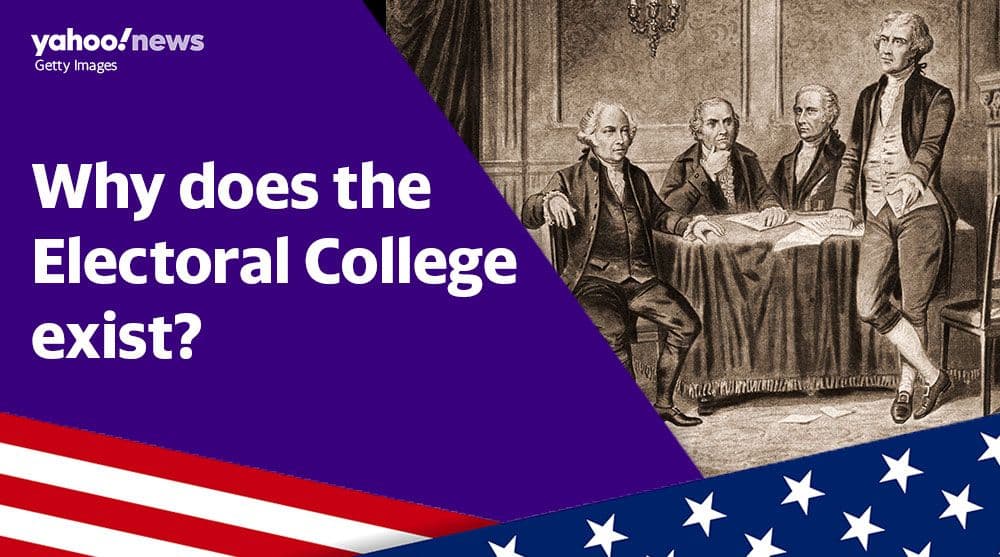The presidential elections in the United States rely on what’s known as the Electoral College system. Once pilloried by Donald Trump, the president now says it’s “far better for the USA”. But it’s certainly not without its detractors.
The system means that even if one candidate wins significantly more votes than the other – as Hillary Clinton did against Trump in 2016 – they may not make it to the White House.
The Electoral College system has become increasingly controversial and could prove a major point of contention again when next month’s election numbers roll in.
Here’s how it works.
What is the Electoral College?
The Electoral College is the group of people that elect the United States President and Vice President. When the public head to the polls, they aren’t actually voting directly for the presidential candidates, but for ‘electors’. Each state is allocated a certain number of electoral votes, depending on its population.
Why does the Electoral College exist?
The electoral college system was set up by the Founding Fathers of the United States in 1787. Because of the size of the country and the lack of communication available at the time, a popular vote was rejected, because it was feared people would simply vote for their local candidate, so big states would always dominate.
Who appoints the electors?
The political parties in each state appoint the electors. So, if you vote for Joe Biden and he wins the popular vote in that state, electors chosen by the Democrats will vote for him to take the presidency.
Do electors have to vote for their party candidate?
They don’t have to, but 99 per cent of the time they do. When an elector doesn’t vote for their party candidate, they are deemed a ‘faithless elector.’ In 15 states, votes from faithless electors are removed, penalised or cancelled, but in the other states there’s no punishment for doing so. Faithless electors have never changed the result of an election.
How many electoral votes does each state have?
Every state has at least three votes. These represent the two senators and one representative in congress. Seven states, as well as Washington DC, have just three votes. California is the most populated state, so has the biggest number of electoral votes with 55, followed by Texas with 38, and New York and Florida with 29 each. In all states, apart from Nebraska and Maine, there’s a winner-take-all system. This means the candidate who wins the most votes in that state earns all of the state’s electoral college votes.
How many electoral college votes will win the Presidency?
There are 538 electors in the Electoral College. A candidate has to win 270 electoral votes, which is half of the electoral college votes plus one, to reach the White House.
Can someone win the popular vote but lose the election?
Yes. It’s happened in five elections in US history.
In the 2016 election Trump won 306 electoral votes to Clinton’s 232 – but Clinton amassed 65.9 million votes compared to Trump’s 63 million. Because Trump got more votes by a small margin in a few key swing states, this means he gained the electoral votes in these states, despite Clinton having more national votes overall.
The same thing happened in 2000 when Al Gore won 544,000 more votes than George W Bush, but Bush won by 271 electoral votes to 266 (one elector didn’t cast a vote).
It also happened in 1824 when Adam Jackson won the popular vote but lost the electoral college votes to John Quincy Adams, in 1876 when Samuel Tilden lost the electoral vote to Rutherford B Hayes despite winning the popular vote, and in 1888 when Benjamin Harrison got to the White House despite losing the popular vote to Grover Cleveland.
Could it happen again?
Yes, potentially. Although it’s previously only happened a handful of times, there’s a belief that as American demography changes, the electoral college vote will become more distorted. This is because in major cities, where there is usually strong Democratic support, the population is becoming more heavily concentrated. Because of the proportion of electoral college votes, this can mean that the states where most people live, such as California and Florida, are underrepresented in the electoral college. For example, one electoral vote in California represents 718,000 people – that’s three times as many voters as one electoral vote in Wyoming which represents 193,000 people.
Are there any advantages to the electoral college system?
It usually reflects the popular vote. It also means that candidates need to get a spread of votes across the country.
Will the electoral college system ever change?
Some democrats, including former Democratic presidential nominees Bernie Sanders and Elizabeth Warren, are calling for an overhaul of the system. They want to get rid of the electoral college system completely, and replace it with the popular vote, so whoever gets the most votes wins the Presidency.
However, this would mean changing the US constitution. This would require both the house and the Senate to give a two-thirds majority, as well as 38 out of 50 state assemblies to agree to it – something many experts believe is almost impossible.
Via Yahoo News




